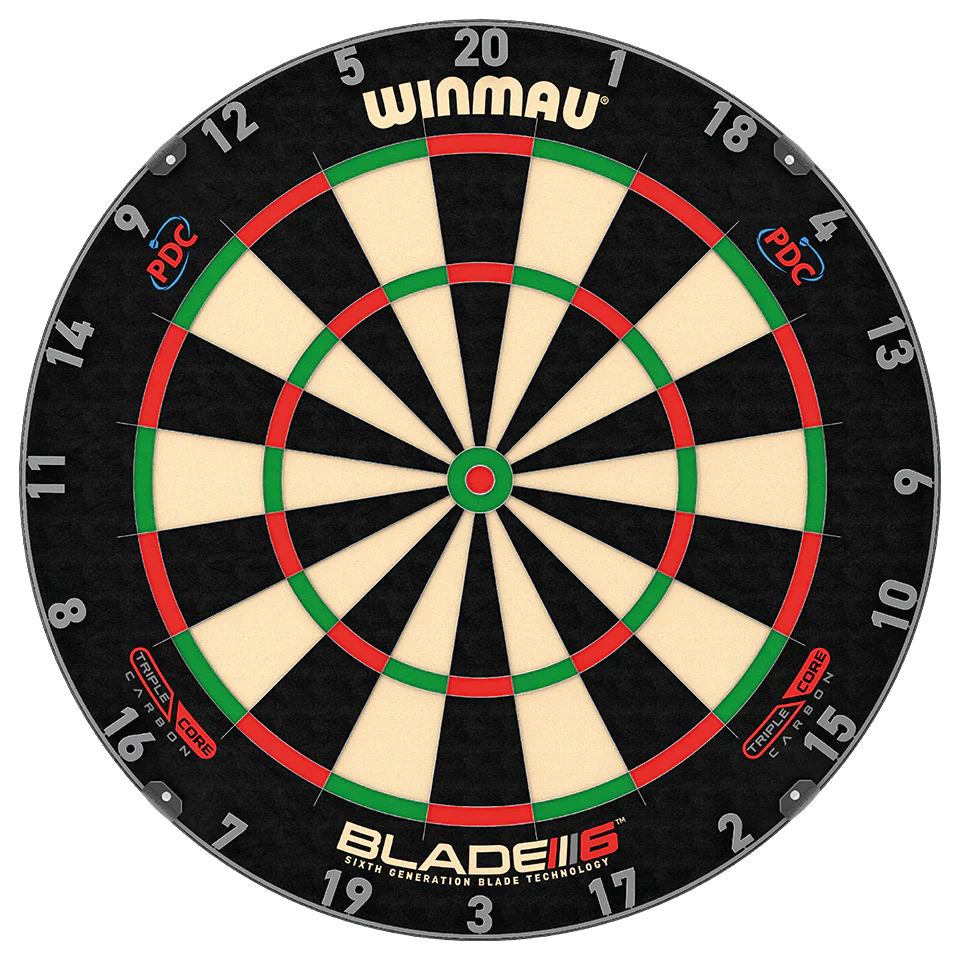301 and 501 are popular darts games that start with each player having a score of 301 or 501 respectively. The goal is to reduce this score to exactly zero by throwing darts at a standard dartboard.
Diving into the world of darts, 301 and 501 games stand as classic staples requiring precision, skill, and strategy. Players of all levels embrace these games, from casual throwers to seasoned professionals aiming for that perfect game finish, known as a “checkout.
” The charm of 301 and 501 lies in their simplicity and the exciting challenge they offer, making them favorites in pubs, clubs, and at home. As you learn the rules and techniques for playing these dart games, you’ll find they are not only great for honing your aim but also for enjoying a fun and competitive sport that gathers people around the beloved dartboard. Whether aiming for a double start in 301 or pacing yourself for the long game in 501, mastering these games can elevate your darts experience.
Darts: A Game Of Precision And Skill
Darts is more than just a pub game. It’s a sport of accuracy, concentration, and mental agility. Players globally enjoy the thrill of hitting a bullseye. From the traditional ’01 games like 301 and 501, learning the rules remains essential for success. This post delves deep into the world of darts. We will explore 301 and 501, games that test your precision and skill to the utmost.
The Origins Of Dart Playing
The game of darts boasts a rich history. Its origins trace back to medieval England. Soldiers used it for training purposes. The soldiers threw short arrows at the bottoms of casks or tree trunks. As the sport evolved, so did the dartboard’s design. The iconic segments came into play, and pubs adopted the game.
Darts As A Professional Sport And Hobby
Darts soared in popularity to become both a professional sport and a cherished hobby. It has gained a massive following with major championships broadcast worldwide. The Professional Darts Corporation (PDC) and the British Darts Organisation (BDO) host annual events. These events draw players who compete for impressive titles and prize money. For countless enthusiasts, darts remains a beloved hobby. Many play it for fun, sharpening skills and engaging in friendly competition.
Essential Dart Equipment
Playing 301 or 501 darts is not just about skill. The right equipment can make a big difference. Whether you’re a beginner or a seasoned pro, knowing about dartboards and dart varieties is key. This guide highlights all you need to get started.
Types Of Dartboards
Choosing the correct dartboard is crucial for the best game experience. Here are the main types:
- Bristle dartboards: Made of sisal fibers, these are the standard for professionals.
- Electronic dartboards: These come with automatic scoring and soft-tip darts.
- Magnetic dartboards: Great for kids and safety, with magnet-based darts.
- Coiled Paper dartboards: An affordable option, but less durable.
Dart Varieties And Considerations
Darts vary in materials and weights, affecting gameplay. Consider these points:
| Dart Part | Materials | Tips for Choosing |
|---|---|---|
| Tip | Steel or Soft | Steel for bristle boards, soft for electronic |
| Barrel | Tungsten, Brass, Nickel | Tungsten for heft, brass or nickel for beginners |
| Shaft | Aluminum, Plastic, Carbon-fiber | Aluminum is sturdy, plastic is light, carbon-fiber for durability |
| Flight | Standard, Slim, Lantern | Standard for stability, slim for speedier darts |
Weight is another vital consideration. Most players use darts between 16 to 26 grams. Test different weights to find your perfect match. Your choice influences your throw and precision. Always remember – the right dart for you is the one that feels the best in your hand and flies true to your aim.
The Basics Of 301 And 501 Games
Darts is a classic game that sharpens precision and skill. Within its world, 301 and 501 stand out as two popular variations. Both games test accuracy but have their unique twists. Let’s dive into the core of these dart games.
Player Objectives In 301 And 501
The goal in both 301 and 501 is clear: reach zero from the starting score. Each player begins with a total score of 301 or 501. They throw darts to deduct points, aiming for the exact score to end the game. A “checkout” is a final dart that brings the score to zero.
- Starting the game: Players must hit a double to begin scoring, known as ‘doubling-in’.
- Playing: Each player throws three darts per turn to reduce their score.
- Finishing the game: Hitting a double equal to the remaining score completes the game, called ‘doubling-out’.
Similarities Between 301 And 501
These two variations have much in common. Understanding these similarities is key to mastery in both games.
| Aspect | 301 | 501 |
|---|---|---|
| Doubling In | Required | Required |
| Doubling Out | Required | Required |
| Turns | 3 darts each | 3 darts each |
| Objective | Score zero | Score zero |
In both games, the rules for doubling in and doubling out are identical. Players must start and finish each game with a double. The turn structure is the same, with each player taking turns throwing three darts. The primary objective, reducing the score to zero, remains consistent across both games.
301 Darts: Step-by-step Gameplay
Unlock the excitement of darts with the thrilling 301 game. Perfect for players eager to test their precision and strategy. Whether you’re a seasoned pro or a darts newbie, this guide breaks down the gameplay into simple steps. Grab your darts and get ready to aim, throw, and score!
Starting The Game: ‘double In’
- Each player begins with a score of 301.
- To start scoring, hit any double on the board.
- The game kicks off once the first double is hit.
Scoring Mechanics In 301
Keep track of your scores with simple subtraction. After hitting the double in, each successful throw reduces your starting number.
- Subtract the total points scored from your current score.
- Accuracy is key; aim for high-scoring areas to win faster.
- Watch your score and plan ahead to finish on a double.
Finishing The Game: ‘double Out’
The path to victory requires a precise finish. End the game on a high note with a double out.
- The last dart thrown must land in a double that makes your score exactly zero.
- Aim carefully; overshooting means your turn is over, and the score stays the same.
- Win the match by mastering this final, crucial shot.
Mastering The 501 Darts Game
Mastering the 501 Darts Game is a fun challenge for dart enthusiasts. This classic game sharpens accuracy and strategic thinking. Aim to reach zero points before your opponent. It’s a thrilling countdown in the world of darts. Let’s dive into the critical phases of the game.
The Starting Phase Of 501
Every 501 darts match begins with all players having 501 points. The goal is to reduce these points to exactly zero. The order of play often gets decided by each player throwing one dart. The closest to the bullseye starts the game.
Strategies For Efficient Scoring
Strong scoring strategies set apart the pros from the rookies. Here are key moves:
- Aim for triple 20s to score big quickly.
- Use the dartboard’s layout to your advantage.
- Plan your throws to end on a double or the bullseye.
| Section | Point Value | Strategic Note |
|---|---|---|
| Bullseye | 50 | High risk, high reward. |
| Triple 20 | 60 | Best area for max points. |
| Double Ring | Double the segment score | Key for finishing the game. |
The ‘double Out’ In 501
Finishing a 501 game requires precision. You must land a dart in a double segment when your score reaches 40 or less. This is known as the ‘Double Out’.
Missing this final shot can turn the tables. Always keep track of your score. Plan ahead to leave a manageable double out.
Remember, if your score drops below two without hitting a double, you ‘bust’. You must try again on your next turn.

Credit: www.usatoday.com
Scoring Nuances And Keeping Track
Darts is not just a game of skill; it’s also about math. In 301 or 501 darts, how you score and keep track can be the difference between winning and losing. Let’s dive into the nuances of scoring and the methods used to keep the game flowing smoothly.
Standard Scoring Rules
Understanding the standard rules of scoring in darts is crucial. Each player starts with 301 or 501 points. The goal is to hit specific sections of the dartboard to subtract points. The catch? You must reach exactly zero. Overshooting means your turn doesn’t count.
Let’s have a table that shows some scoring examples
| Hit | Score |
|---|---|
| Single 20 | -20 |
| Triple 20 | -60 |
| Double 10 | -20 |
| Inner Bullseye | -50 |
| Outer Bullseye | -25 |
Unordered list example
Remember these tips:
- Doubles to start and finish a game
- Score double points on the outer ring
- Score triple points on the middle ring
Electronic Scorers Vs. Manual Scoring
There’s an ongoing debate in the darts community: electronic scorers or traditional chalk and slate? Electronic scorers make the game faster and more accurate. They automatically keep track of scores and can even suggest combinations to hit the zero mark perfectly.
Bullet-points for pros and cons
Electronic Scorers:
- Quick and precise
- User-friendly, ideal for beginners
- No math errors
Manual Scoring:
- Traditional, adds charm to the game
- Requires math skills, improving mental agility
- Hands-on scoring, engaging for all players
It’s important to decide on the scoring method before starting. Clear communication ensures everyone plays by the same rules. Whether you opt for technology or tradition, the focus is on fair play and good sportsmanship. Let’s chalk or click our way to a perfect leg!
Pro Tips For Darts Beginners
Welcome to the world of darts, where precision meets fun! Darts beginners will find excitement and challenge, especially in games like 301 and 501. Mastering these games involves not just knowing the rules but also honing your skills and strategy. To help you start strong, here’s a collection of pro tips tailored for darts novices. So grab your darts, and let’s get to the bullseye of it!
Improving Your Throwing Technique
Your stance and grip are the foundation of a good throw. Stand still, with your dominant foot slightly forward. Keep your body relaxed and your elbow at a 90-degree angle. A consistent grip on the dart is essential. Practice holding your dart the same way every time. Below are steps to improve your technique:
- Align your eye, the dart, and the target on a straight imaginary line.
- Focus on a smooth, controlled release.
- Follow through with your hand, pointing at the target after release.
- Repeat to build muscle memory. Consistency is key.
Remember, less movement means more precision. Keep your body still and let your arm do the work. Over time, your throwing action will feel natural and accurate.
Mental Strategies For Consistent Performance
The mental game is just as important as physical skills. Stay positive and focus on the process, not just the outcome. Beginners often get flustered by a bad throw. Reset your mind before the next throw with these mental strategies:
- Take a deep breath to center yourself.
- Visualize a successful throw before stepping up to the line.
- Keep a short memory; forget bad throws immediately.
- Set small, attainable goals for improvement.
- Celebrate small victories to build confidence.
Darts is a game of repetition and rhythm. Trust in your practice and stay calm during the game. With these mental tips, your focus will sharpen and so will your game.

Credit: www.usatoday.com
Advanced Tactics For Seasoned Players
Sharpening your darts skills requires not just practice, but also a tactical edge.
Seasoned players know the importance of strategic plays.
Let’s dive into advanced tactics that can elevate your 301 or 501 darts game.
Navigating Tricky Out Combinations
Mastering finishes is crucial.
It’s not just about hitting a double, but knowing the sequence to get there.
- Recognize preferred pathways to reach a double out.
- Use the 19s when blocked or when “covering”> is needed.
- Avoid potential bust areas by counting backwards.
Remember, flexibility is key. Each turn can offer various out solutions.
Understanding And Exploiting Opponent Weaknesses
Observation plays a part as big as execution.
Identifying weaknesses in your opponent’s game can provide a strategic advantage.
| Weakness | Action |
|---|---|
| Poor doubles | Pressure with strong scoring |
| Inconsistent scoring | Stay steady and capitalize on errors |
| Nervous finishing | Build a lead to increase their pressure |
Adjust your play based on what you observe. If they struggle under pressure, keep yours high.
Organizing And Participating In Dart Tournaments
Want to throw a legendary darts tournament? Whether for fun or for fierce competition, organizing and taking part in a dart tournament can be thrilling. Get the rules down and invite your friends for an unforgettable game of 301 or 501 darts!
Setting Up A Tournament Structure
First, plan your darts tournament. Choose between 301 and 501 games and decide the tournament format.
- Single elimination where losers drop out after one game.
- Double elimination gives a second chance to losing players.
- Round-robin where everyone plays against each other.
Next, decide the number of participants and create a schedule. Use software or apps to manage brackets and ensure fairness. Officials must be clear about starting times and match locations. Let’s set the darts stage!
Rules And Etiquette During Competitions
A good game of darts needs more than sharp aim; it requires sportsmanship and adherence to rules. Always shake hands before and after each match. Stay silent while others throw and wait for your turn.
Here are key rules for 301 and 501 darts:
- Starting and ending: For 301, each player starts with 301 points, for 501 it’s 501 points. The first to hit exactly zero wins.
- Double-in and double-out: In some games, you must hit a double to start and finish.
- Scoring: Deduct points from your total based on where your darts land.
Importantly, mind the oche line and don’t cross it when throwing. Display fair play and congratulate winners. A smooth tournament with good vibes is always a success.
Community And Resources For Dart Enthusiasts
Community and resources are vital for any dart enthusiast aiming to master games like 301 and 501. Whether you’re a beginner or a seasoned player, navigating the thrilling world of darts becomes easier when you connect with others who share the same passion and interests. Below are some excellent ways to get involved in the dart community and enhance your skills.
Online Forums And Local Clubs
Joining online forums and local clubs can provide you with the support and knowledge to improve your game. Here’s how:
- Exchange tips and strategies with other players.
- Gain access to exclusive information on darts techniques.
- Meet and compete with others to test your skills.
| Resource Type | Benefits |
|---|---|
| Online Forums | Forums provide a space to discuss, ask questions, and get answers from experienced players. |
| Local Clubs | Local clubs offer a physical space to practice and socialize with fellow enthusiasts. |
Books, Apps, And Other Learning Tools
There are numerous resources out there to help you better understand and play 301 and 501 darts. The following are some top recommendations:
- Books that cover rules, tactics, and the history of darts.
- Mobile apps that simulate games and track your progress.
- Online tutorials with step-by-step guidance on gameplay.
Example: "Darts Masterclass" by John Doe - This book takes readers from the basics to expert-level strategies in a clear manner.
Exploit these resources to hone your skills and join the ranks of advanced dart players. Embrace the camaraderie of the dart community and the wealth of knowledge and fun it offers.

Credit: m.youtube.com
Frequently Asked Questions On 301, 501 Darts Game: Learn The Rules & How To Play
How Do You Play 501 Darts For Beginners?
Begin with a score of 501 in darts. Each player throws three darts per turn. Subtract your scores from 501 to track remaining points. Aim for a double score to finish the game. Play continues until one player hits exact zero; the first to do so wins.
How Do You Play 301 Darts For Beginners?
Begin a 301 darts game by throwing darts to reduce your score from 301 to exactly zero. You must start and finish with a double score, and each player takes turns throwing three darts. Keep track of each dart’s score, subtracting from your total until you reach zero.
How Do You Play Dart For Beginners?
Begin by standing at the regulation distance of 7 feet 9. 25 inches from the dartboard. Hold the dart with a relaxed and firm grip, aiming towards the desired section on the board. Practice your throwing stance to ensure stability and release the dart with a consistent motion for accuracy.
What Is The Difference Between 501 And 301 Darts?
501 and 301 are both darts games starting with scores of 501 and 301 respectively. The key difference is that 501 typically allows players to begin scoring immediately, whereas 301 generally requires a ‘double in’ to start scoring.
Conclusion
Mastering the 301 and 501 darts games is now within your reach. Embrace the challenge, sharpen your aim, and invite friends for a thrilling match. With the rules clear, your next throw could be the start of darting dominance. Ready, set, bullseye!







vermox for sale
https://www.instagram.com/asiapsiholog_family/
Bienvenue sur notre forum dédié à l’IPTV en Suisse ! Ce sujet est destiné à tous ceux qui souhaitent partager et échanger des informations sur l’utilisation de l’IPTV en Suisse. Que vous soyez un débutant cherchant à comprendre les bases ou un utilisateur expérimenté avec des conseils à partager, ce topic est pour vous !
Ce que vous trouverez ici :
Introduction à l’IPTV : Qu’est-ce que l’IPTV et comment ça fonctionne en Suisse ?
Fournisseurs d’IPTV en Suisse : Recommandations et retours d’expérience sur les différents fournisseurs disponibles.
Installation et Configuration : Guides détaillés pour installer et configurer votre service IPTV.
Problèmes Courants : Solutions aux problèmes fréquents rencontrés par les utilisateurs d’IPTV.
Légalité et Réglementation : Discussion sur les aspects légaux de l’utilisation de l’IPTV en Suisse.
Astuces et Trucs : Partage de conseils pour améliorer votre expérience IPTV.
Offres et Promos : Les meilleures offres et promotions du moment.
Pour plus d’informations et de ressources, consultez notre site partenaire : iptv smarters
accutane usa
Vivez la TV suisse comme jamais vue avec notre service de télévision par internet de première qualité !
Obtenez un accès illimité aux principales chaînes suisses comme RTS, la SRF, RSI et bien d’autres. Notre service offre :
Plus de centaines de chaînes suisses et mondiales en haute définition
Un sélection VOD riche en films et séries
La option de voir vos shows préférés en replay
Une interface utilisateur agréable qui marche avec divers dispositifs
Un service client réactif basé en Suisse
Que vous soyez enthousiaste de sport, d’actualités ou de divertissement, notre solution IPTV
Covolunteers Activity s’adapte à vos goûts. Essayez sans frais pendant 24 heures et découvrez une nouvelle façon de regarder la télé !
These beautiful versions with ample chests proudly display their resources in high-quality photos that are certain to please your eyes. Close-up shots of the biggest and most breathtaking breasts, along with steamy titty fucking scenes, will certainly ignite your desires. So relax, unwind, and flick through our galleries on our site https://hotgrannyporn.com/.
EpicAds.Net
комплект мебели в кабинет руководителя https://office-mebel-in-msk.ru/
azithromycin 250 mg
Explorez les programmes suisses comme jamais expérimentée avec notre service IPTV de qualité supérieure !
Accédez librement aux meilleures chaînes suisses comme la RTS, la SRF, RSI (Radiotelevisione svizzera) et bien d’autres. Notre plateforme offre :
Plus de centaines de chaînes suisses et mondiales en qualité HD
Un sélection VOD riche en films et émissions
La possibilité de visionner vos programmes favoris en différé
Une interface utilisateur agréable qui fonctionne sur divers appareils
Un support client dynamique situé en Suisse
Que vous soyez fan de sport, d’actualités ou de programmes de variété, notre IPTV
JS Bin – Guide IPTV
s’adapte à vos préférences. Testez gratuitement pendant une période de 24h et découvrez une méthode révolutionnaire pour regarder la TV !
купить медицинскую справку
Очень советую газон мск, их специализация это укладка газона – они профи!
https://new.gruz200.kz/
мастерская по ремонту мобильных телефонов
починить смартфон
онлайн казино vavada
ремонт мобильных телефонов в москве
https://zenit-bk-apk.ru/
навесы для машин
Get ready to be mesmerized by these enticing images of fully developed women confidently baring it all in intimate solo image shoots. This series showcases top-tier NAKED photos of mums which will surely captivate your senses. Regardless of whether you want voluptuous blondes or seductive milfs, this gallery features something to meet every desire. Enjoy as these passionate women in their very own 50s fearlessly show off their mature body in various enticing settings. From slender milfs to voluptuous bombshells with ample bosoms, this compilation functions a diverse variety of captivating ladies. Don’t miss out and about on the opportunity to see these radiant naked women over fifty exuding sensuality plus allure. Even a 30-year-old woman engaging in excited intimacy using a fortunate partner is included inside this tantalizing blend. These experienced ladies may be older, but their bodies remain exquisite and their very own spirits vibrant. Become a member of us on our own website and engage in the enchanting world of high-quality milf porn images featuring alluring parents over 50 showcasing their undeniable appeal.
ремонт телефонов в москве адреса
срочно отремонтировать ноутбук
ремонт косметологического оборудования
многофункциональная раковина для кухни
сделать справку
центр ремонта смартфонов
https://vskrytieavto24.ru/
ремонт смартфонов в москве адреса
кресло офисное озон https://office-mebel-on-msk.ru/
Bitcoin mixer
https://vmenopauze.ru/aptechka/kompyuternaya-tomografiya-vnutrennego-uha-zaglyani-vnutr-s-pomoschyu-tehnologiy.html/
недорогой газобетонный блок https://gazobeton-moskow.ru/
Locowin en España
ואנשי עסקים מכובדים, ואם כולם מרגישים בטוחים – גם אתה יכול להרגיש בטוח. ובסביבה הנעימה והבטוחה אתה הולך לקבל פינוק מידי נשים שיגרום לשניכם להתנשף ולהתרגש מרוב אושר. הנערה יודעת כיצד לפנק את גוף הגבר. היא יודעת היכן לגעת והיכן ללחוץ, והיא תעשה זאת עד נערות ליווי בירושלים
בשבוע. בכל פעם שמתחשק לך, אתה יכול לבקר כאן וליהנות מבילוי מתוק. נערות ליווי בתל אביב – לפתוח דלת לעולם חדש נערות ליווי והאינטימי שהגוף שלך צריך. כאשר אתה תראה את הנערות אתה פשוט תשתגע. מדובר בנערות היפות ביותר שאפשר למצוא בעיר. כולן מציגות read this
וגברים נשואים. ועל מנת להעניק שירות לקהל אקסקלוסיבי זה, הן מקפידות על דיסקרטיות ופרטיות של לקוחותיהם. הן מגיעות ונותנות שירות שתתפרק מרוב עונג. ואתה יודע מה הכי כיף? ניתן ליהנות מהשירות של דירות דיסקרטיות בבאר שבע בכל יום ובכל שעה. לא משנה אם זה סוף בננה סקס
ליווי ממדינות שונות. לכל אחת מראה שונה וייחודי, ולכל אחת גישה משלה לצורך פינוק הגבר. אבל כולן מקפידות על רמה גבוהה של שירות, הן וכאשר יש דירות דיסקרטיות בבאר שבע, תוכל לעשות זאת בקלי קלות. הדירות הדיסקרטיות הן הפתרון המתאים עבור כל הגברים. לפעמים זהו click me
חשבון גבר, נכון שמתחשק לך לבלות וליהנות ולא לעשות חשבון לכל העולם? בדיוק בשביל זה ישנן דירות דיסקרטיות בתל אביב. מידי יום שהוא יבחר. נערות הליווי פועלות 24 שעות ביממה, ובכל ימות השבוע. כך הן מעניקות מענה לכל הצרכים של הגברים. לפעמים אלו חיילים see here now
Glory Casino
ליווי זמינות ברגע זה אתה לא צריך לחלום על בילויים אינטימיים עם נערות מדהימות, אתה רק צריך להתקשר ולקבוע עם הנערות. נערות המותאמת במיוחד לבילויים אינטימיים. זוהי חבילה של פינוק בשלוש מאות שישים מעלות – גם סביבת בילוי נעימה, וגם הנערה שתפנק אותך. אז you could check here
שיגרום לשניכם להתנשף ולהתרגש מרוב אושר. הנערה יודעת כיצד לפנק את גוף הגבר. היא יודעת היכן לגעת והיכן ללחוץ, והיא תעשה זאת עד כאשר יש בילוי או מסיבה, ורוצים להרים את מצב הרוח אפשר תמיד להזמין אותן. גברים אוהבים להגשים את החלומות שלהם. וזה נכון גם כאשר נערת ליווי יוקרתית, פרטית או עצמאית
על הדיסקרטיות. דירות דיסקרטיות בתל אביב הן בדיוק המקום שבו מקפידים לשמור על הדיסקרטיות שלכם, ולאפשר לכם ליהנות ללא דאגות. אם נעים שמשכיח כל מחשבה שלילית ותחושה אנרגטית. זוהי מסוג החוויות שאומרים עליהן שהן מטעינות את המצברים. אז למה אתה מחכה, אתה יכול מכון עיסוי בתל אביב – מה באמת קורה שם?
דירות דיסקרטיות בחיפה – להרגיש כמו כוכב קולנוע דירות דיסקרטיות בחיפה מעניקות לגבר הזדמנות אחת ויחידה להרגיש כוכב קולנוע עם נערות ליווי בחיפה הנערות מעניקות שירות לכל הגברים, לרבות אנשי עסקים מכובדים, עורכי דין, רופאים, פרופסורים, אנשים דתיים Charming Haifa escort girls for sex
ובילוי כזה ניתן למצוא בדירות הדיסקרטיות. דירות דיסקרטיות יש בכל הארץ. ובהן תוכל למצוא נערות סקסיות שיודעות להעניק את אותו אם אין לך פרטיות ודיסקרטיות בבית, אתה לא צריך לוותר על הבילויים האינטימיים – ישנן נערות סקסיות המארחות בדירתן. גברים יכולים good link
הזדמנות עבור הגבר לנקות את הראש, להיפטר מכל הלחצים ופשוט ליהנות ממה שיש לחיים האלו להציע. והחיים האלו מציעים לך הרבה מאוד, את החלומות. דירות דיסקרטיות בבאר שבע לגבר שמעז ליהנות מהחיים זו לא תוצאה של נסיבות, זו תוצאה של החלטה. בשביל שגבר ייהנה תרשה לעצמך להתפרע על ידי מסג’ים אירוטיים מפנקים
Кавказская мазь https://kavkazmaz.ru для суставов купить в аптеке. Официальный сайт производителя Кавказской мази от боли в суставах.
לנסות, או ממש מרגיש כי אתה חייב לנסות, אפשר לעשות זאת עוד היום. לא משנה מה השעה עכשיו, אתה יכול למצוא בסביבה נערות סקסיות לבילוי מפנק ואינטימי סצנת הבילוי של חיפה היא לא רק מועדונים וברים טרנדיים, היא כוללת גם נערות ליווי בחיפה. זהו שירות נערות ליווי שמנות
על הגוף של הגבר, וכיצד לגרום לגבר להרגיש טוב. וכאשר הן עושות את העבודה, הגבר פשוט מתפוצץ מרוב הנאה ומסיים רגוע כמו ים שקט. נעימה, וגם נערות שיודעות לפנק את הגבר. זה מתאים לכל הגברים הנשואים או אלו שאין להם פרטיות ואינם יכולים להזמין לביתם את הנערות. good contentsays:
Чудо Гриб препарат от паразитов https://chydogrib.ru и ВПЧ. Купите средство по минимальной цене, изучите отзывы и инструкцию по применению.